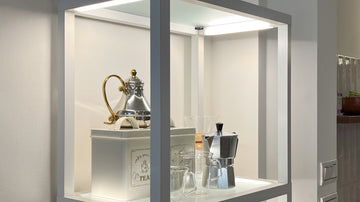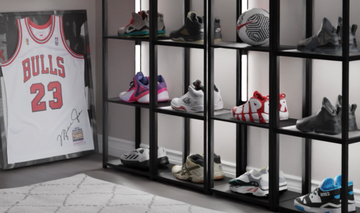How Wireless Charging Works & Why USB-C is the Standard of the Future
Nothing ruins the look of your room more than unsightly, tangled cables snaking all over the place and all over your home office desk. Throw in a cable for your laptop, a cable for the extension cord, and a cable for your phone and you're already dealing with a whole mess of cables. Need a light? Another cable. Ways to minimize cable usage at your home office desk has become a necessity in this digital age.
THE HISTORY OF WIRELESS CHARGING
One particular solution for reducing cable usage is Wireless Charging. Wireless charging has been around for more than a hundred years since the days of Nikola Tesla when he demonstrated the ability to transmit electricity through the air by creating a magnetic field between two circuits, a transmitter and a receiver. But since then there hasn’t been much practical use for wireless charging until recently.
Apple has pioneered the use of wireless charging by implementing the feature into their flagship iPhone series starting with the iPhone 8 in 2017. Majority of phone manufacturers have also included wireless charging within their devices, such as Samsung and their Galaxy series. In addition, wireless charging has been integrated in multiple devices including laptops, phone cases, earbuds, and even kitchen appliances. As you can see, wireless charging has been cemented within our digital future as a means to innovate and finally leave behind pesky cables.
HOW DOES WIRELESS CHARGING WORK?
There are various ways to implement wireless charging but the most common way that is adopted by Apple iPhones and the majority of smartphones is to use an electromagnetic field between two copper coils. A magnetic loop antenna is used to create an oscillating magnetic field which creates a current in receiver antennas. If the required capacitance is added so that the loops resonate at the same frequency, which is called magnetic resonance, the receiver is allowed to receive a greater amount of induced current. This does limit the range of wireless charging but allows for a fast charging experience. And as time goes on and more and more improvements are made within this area, wireless charging will just continue to improve and become a necessity for any electronic device.
USB TYPE-C EXPLAINED: WHAT IS THE DIFFERENCE BETWEEN USB AND USB-C?
USB-C was first developed in 2014 and has recently been adopted by most major smartphone and laptop manufacturers, most notably Apple with their iPhone and MacBook series. The improvements over the standard USB interface includes a tinier, reversible connector that is compatible with the newest USB 3.1 technology along with USB Power Delivery. While the older, more well known USB type-A has been the standard for USB 1.0 and USB 2.0 ports, USB-C is the optimal connector for USB 3.1 which is 10x faster than USB 2.0. Not only that, but with the release of USB 3.2 in 2017, which is twice as fast as the previous USB 3.1, USB-C has been solidly chosen as the way of the future in terms of USB devices as it is the only type that is compatible with the newest USB technology. This is one of the defining reasons that Apple chose to adopt the USB-C into their smart devices and laptops, and why many competitors such as Samsung followed suit. As it stands now, USB-C is going to make all USB Type-A connectors obsolete in a few years as more and more companies abandon the old, slower technology in favor of USB-C.
DESK WITH WIRELESS CHARGING
With the advent of wireless charging, combined with the adoption of the USB-C standard across multiple devices led by Apple’s iPhone, the designers at FENLO saw a gap that needed to be filled. This is why FENLO has designed the Future, which is a desk with wireless charging that embeds the latest technology of wireless charging. Not only does the Future charging desk incorporate wireless charging technology, but it also includes the latest USB-C and USB charging ports as well, making it the only desk with wireless charging on the market that has USB charging and USB-C charging all within one charging desk. With the ability to work-from-home becoming commonplace within our society, the need to optimize our home office space has become more and more necessary. The Future All-in-One Charging Desk fulfills this need and more.
CHARGE ALL OF YOUR COMPATIBLE DEVICES
For all the Apple iPhone lovers out there, FENLO has ensured that the Future charging desk meets the standards set by Apple regarding wireless charging and USB-C. Not only that, but the FENLO Future Desk with Wireless Charging is tested to work on all compatible smart devices including Android. With USB-C being adopted as the standard USB interface in the future and wireless charging becoming more and more common, securing the only home office desk with a built-in USB-C port is going to be needed by anyone who wants to save space while working from home.
MEET FUTURE: THE ONLY DESK WITH WIRELESS CHARGING, USB, & USB-C CHARGING ON THE MARKET






